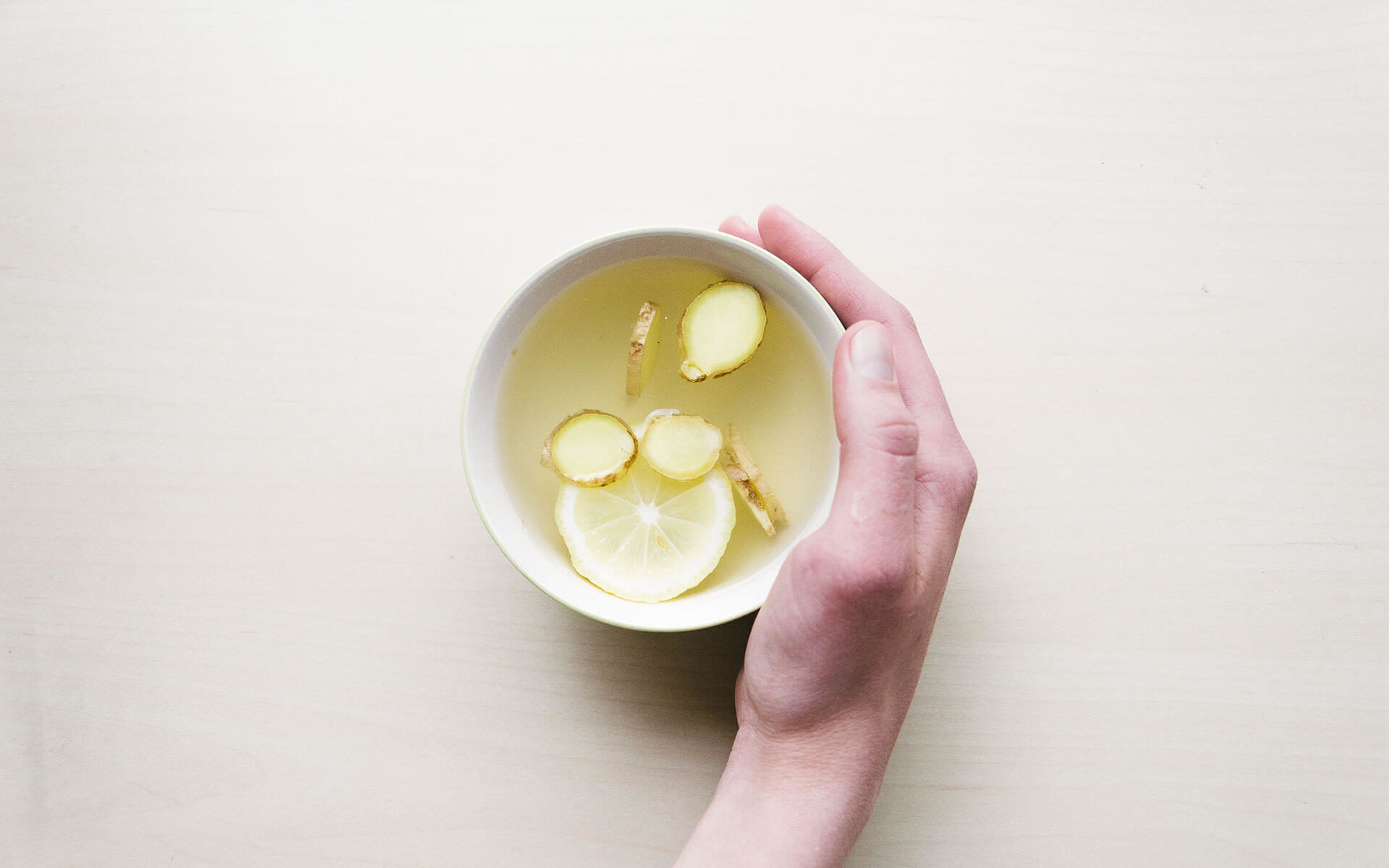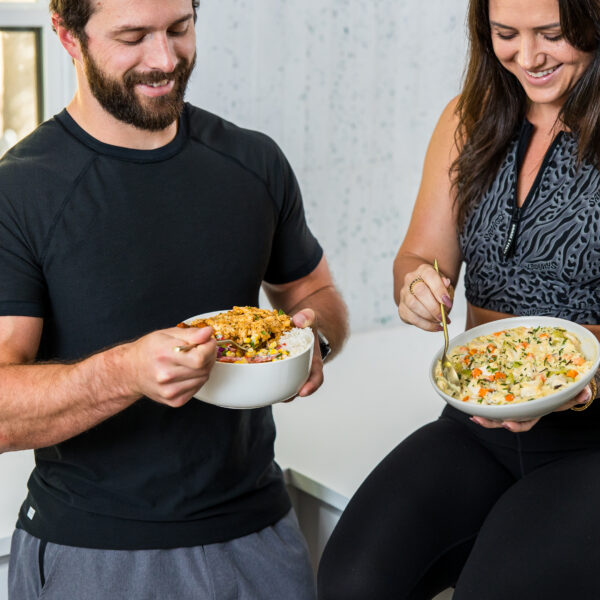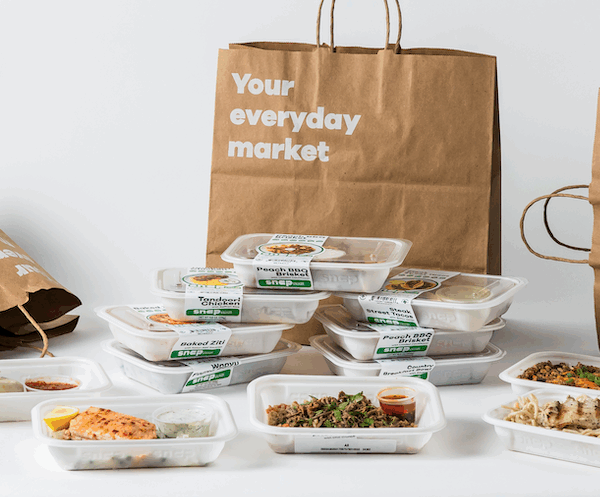We know that there are a lot of you embarking on resets, elimination diets or eating habit improvements in the new year, but what if you’re still experiencing digestive issues? Our Lead RD, Sam, is on the blog today talking about ways you can improve your digestion and help alleviate your symptoms.
Eat (and chew!) slowly, sitting down
We’re always on-the-go these days, which translates to scarfing down our food in the car or while we’re working. We almost never take the time to eat slowly, without distraction. The benefits of taking time with your food are numerous, though, and they don’t end with improved digestion.
By eating slowly and taking your time chewing your food, you help optimize digestion by helping your body better break down the food. On top of that, if you eat slowly and without distraction, you’re better able to recognize when you’re full. You’re also more likely to feel satiated after your meal, since you’ve actually been present for the eating experience. This is a great habit to continue with, even after your digestive symptoms improve.
Start with cooked vegetables until digestion improves
If you are struggling with digestive issues and eating lots of raw vegetables, it’s usually a good idea to focus on eating only cooked vegetables until digestion improves. Generally, raw vegetables are harder for your body to digest. As you work to heal your gut and optimize digestion, you may find that you do better with raw veggies. Cut them out for a few months to see if symptoms improve, then bring them back in slowly to see how your body responds.
Consider a reset or elimination diet, like Whole30
If you’re struggling with chronic digestive issues (things like bloating, diarrhea, frequent bowel movements or constipation), I highly recommend embarking on an elimination diet like Whole30. The benefit of a Whole30 is that you remove commonly inflammatory foods for 30 days to see how your body feels without them. From there, you can reintroduce foods one at a time to see what impact (if any) they have on your digestion, mood, skin and more. Finding out which foods work for you (and which don’t) can help you to eat in a way that helps you feel your best. For more on why we love Whole30, click here.
Supplement with collagen, gelatin and bone broth
Both collagen, gelatin and bone broth (which contains gelatin) can help facilitate gut healing by helping to repair the gut lining. This is a great thing, since an increasing number of people are suffering from gut permeability (aka leaky gut!) thanks to a Standard American Diet (or SAD) that includes excessive sugar and gluten intake and exposure to pesticides and other toxins. If you supplement with any of these while cleaning up your diet, you’ll get a 1-2 punch of gut healing goodness. Our favorites are Vital Proteins collagen and Fond bone broth, but you can also make your own bone broth at home in the slow cooker or Instant Pot for a cost-effective option. If you prefer to have a pre-made collagen drink, we love Zupa Noma, which utilizes grass-fed collagen in their veggie soups.
Utilize food as medicine probiotics
While there’s a time and a place for supplementation, you can get some pretty great gut health benefits from probiotic-rich foods. Probiotics are living microorganisms that, when ingested, help to colonize your gut with health-promoting “good” bacteria. Given the aforementioned pitfalls of the SAD, many people have an imbalance in their gut bacteria, with more “bad” or pathogenic bacteria instead of the “good” commensal bacteria.
You can find probiotics in various foods, such as kefir, kombucha, kimchi, sauerkraut, fermented veggies or some yogurts (Coconut Cult for the win!). Consume 2-3 probiotic-rich foods per day, or feel free to supplement with a high-quality refrigerated or soil-based probiotic from your local health food store.
It’s also important to consume prebiotics, which are dietary fibers that help feed your friendly gut bacteria. Some great examples of prebiotic-rich foods include garlic, onions, leeks, asparagus, flax seeds, jicama, apples, bananas and seaweed.
Consider taking a digestive enzyme or HCL
Many people, even those suffering from acid reflux, actually have too little stomach acid. This can make digesting food a challenge, since stomach acid helps to break down your food before it heads to the small intestine. Hydrochloric acid (or HCL) is the main digestive acid in the stomach. If your own body isn’t producing enough, supplementing with HCL, can help your stomach do it’s job. Reach out to a doctor or dietitian if you want more information on dosing here.
Your body naturally makes digestive enzymes, which help break down fat, protein and carbs into smaller molecules that are more easily absorbed. There are three main types of digestive enzymes, and they help break down the three macronutrients ; proteases help break down protein, lipases help break down fat and amylases help break down carbohydrates.
There are other enzymes made in the small intestine as well. Though your body does create digestive enzymes, if it’s unable to make enough, your food can’t be digested properly. This can lead to digestive symptoms or an inability to digest certain foods. If you suspect this might be a problem for you, you can supplement with digestive enzymes or you can eat foods naturally high in digestive enzymes, such as pineapple, papaya, mango, avocados, sauerkraut, kimchi and ginger.
We’d love to hear if you implement some of these strategies and whether or not they improved your symptoms. Let us know in the comments!
Want to improve your digestion and save yourself time in the process? Try our Whole30 meal plan today!





Leave a Reply
No Comments